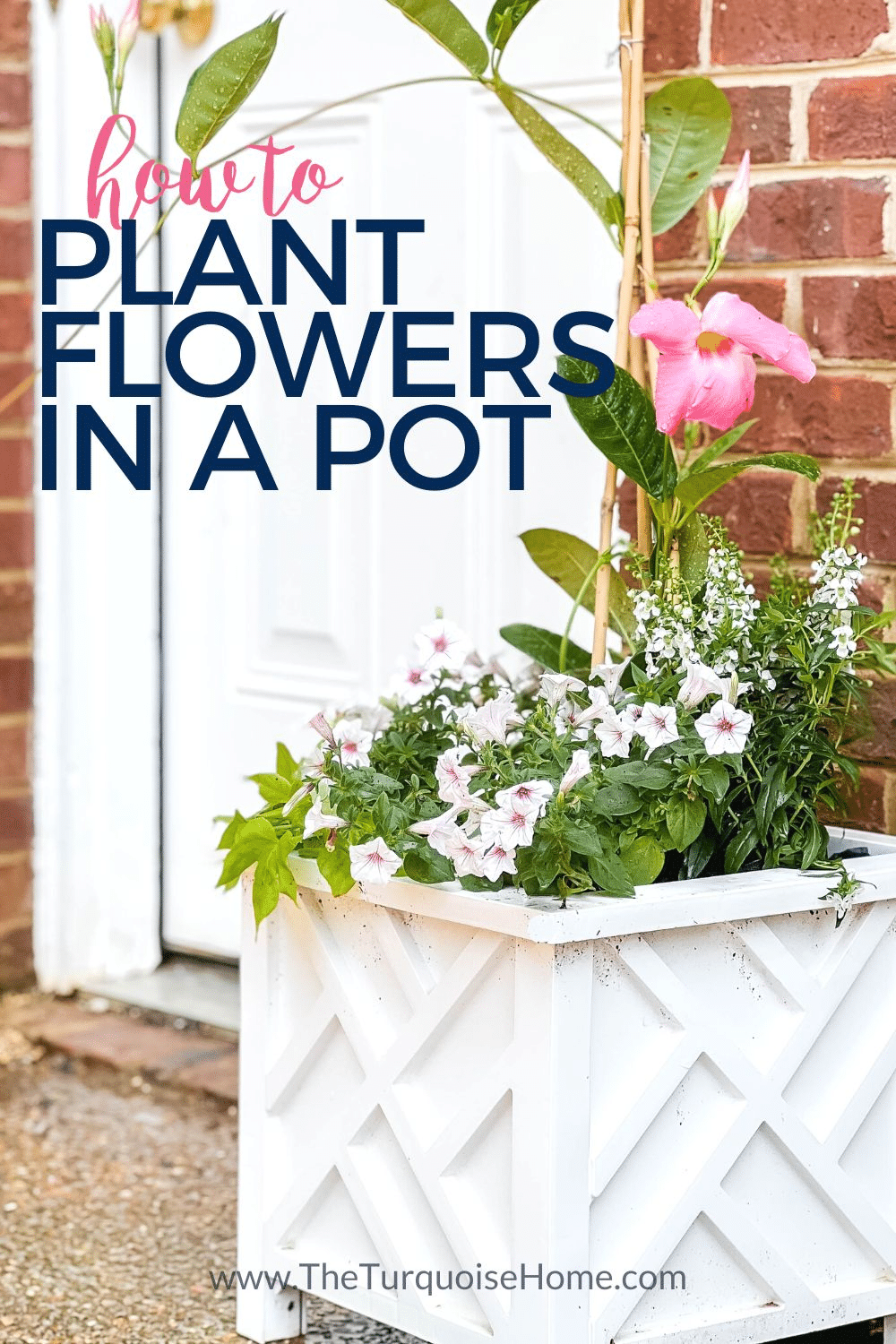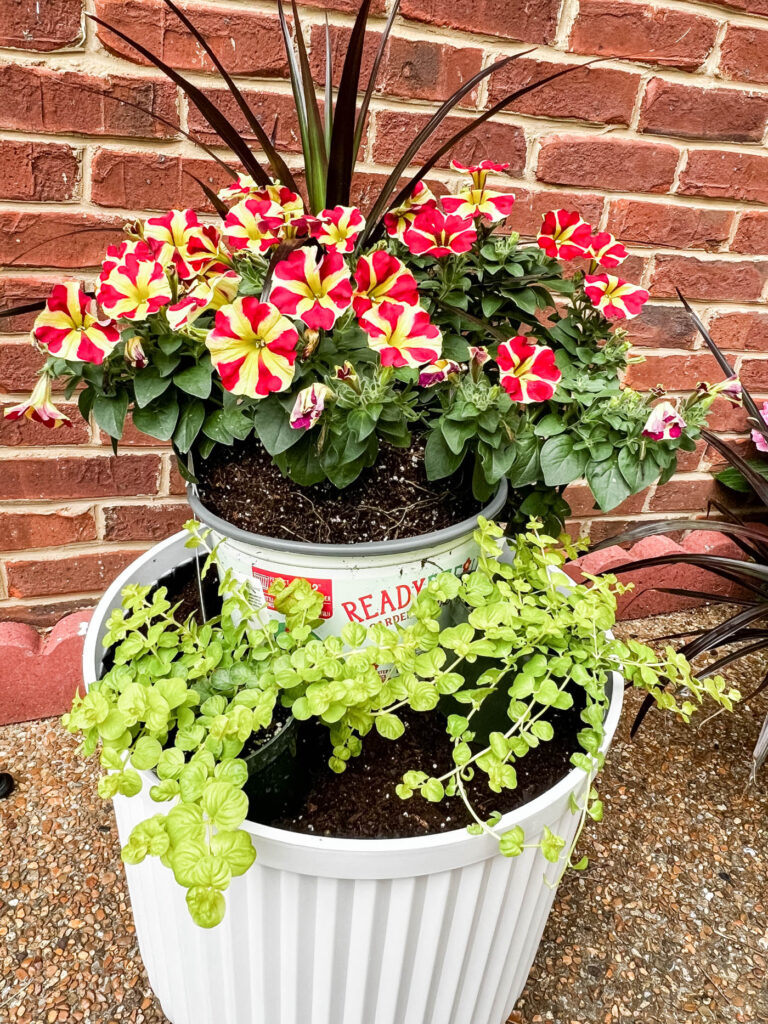Planting potted flowers can be a delightful way to brighten your space. It’s simple, even for beginners.
Potted flowers add color and charm to any home or garden. They are perfect for small spaces and can easily be moved around. Whether you have a green thumb or are new to gardening, potted flowers can be a rewarding project.
The key is knowing the best way to plant them to ensure they thrive. With the right tips and a bit of care, your potted flowers will flourish, bringing beauty and joy to your surroundings. Let’s explore the best practices for planting and caring for your potted flowers.
Choosing The Right Flowers
Annuals bloom for one season. They need planting every year. Perennials come back every year. They need less care. Think about your garden needs. Choose annuals for a burst of color. Pick perennials for lasting beauty.
Check your local climate. Some flowers need lots of sun. Others grow better in shade. Warm climates suit tropical flowers. Cool climates need hardy flowers. Ask your local garden center for advice. Choose flowers that match your weather. This ensures they thrive.

Credit: theturquoisehome.com
Selecting The Perfect Pot
Choosing the right material for your pot is important. Clay pots are good for most plants. They let water escape, keeping the soil dry. Plastic pots are light and easy to move. They hold water longer. Metal pots look nice but can get hot in the sun. Wooden pots are pretty but might rot over time. Each material has its own benefits and drawbacks.
Pick a pot that is big enough for your plant. Plants need room to grow. Too small, and they will not thrive. Make sure the pot has drainage holes. These holes let extra water out. This stops roots from rotting. If the pot does not have holes, you can add some yourself. Proper drainage is key for healthy plants.
Preparing The Soil
Loosen the soil before planting potted flowers. Mix in compost for nutrients. Ensure proper drainage for healthy roots.
Soil Mix Options
Good soil helps flowers grow strong. Use a mix with peat moss, perlite, and compost. This mix holds water but also drains well. You can buy ready-made soil or mix your own. Peat moss keeps the soil light. Perlite helps with drainage. Compost adds nutrients to the soil. Make sure to check the pH level; it should be 6 to 7 for most flowers.
Nutrients And Fertilizers
Flowers need food to grow. Use slow-release fertilizers. These give plants nutrients over time. You can also use liquid fertilizers every two weeks. Look for a balanced fertilizer like 10-10-10. It has equal parts of nitrogen, phosphorus, and potassium. These help with growth, roots, and blooms. Always follow the instructions on the package. Too much fertilizer can harm the plants.
:strip_icc()/blue-ceramic-container-with-bright-tropical-plants-9756f0d6-bd3a1b5e7f9140e98efc75dbf93550b9.jpg)
Credit: www.bhg.com
Planting Techniques
Plant flowers at the correct depth. This helps them grow well. Dig a hole that matches the flower pot size. Ensure the top of the root ball is level with the soil surface. Avoid planting too deep. This can harm the plant. Too shallow planting can dry out roots. Check the plant label for specific depth instructions. Follow these steps for healthy plants.
Give each plant space to grow. Crowded plants fight for nutrients. Follow spacing guidelines on the plant label. Leave some room for air circulation. This prevents diseases. Good spacing also helps roots spread. Healthy roots mean strong plants. Measure the distance between plants. Stick to the guidelines for best results.
Watering Strategies
Water potted flowers thoroughly but not too often. Ensure soil is moist, not soggy, to promote healthy roots. Use a watering can for even distribution.
Frequency And Amount
Water potted flowers regularly. Keep the soil moist but not soggy. Use your finger to check soil moisture. If it’s dry, water the plant. Avoid overwatering. This can harm the roots. Plants need less water in cooler months. Hot weather means more frequent watering. Choose pots with drainage holes. This prevents water from sitting in the pot.
Signs Of Overwatering
Yellow leaves are a sign. Drooping leaves can also mean too much water. Check the roots. If they are mushy, the plant is overwatered. Foul smell from the soil is another sign. Let the soil dry out before watering again. Remove any dead or yellow leaves. Ensure your pot has good drainage.
Sunlight Requirements
Potted flowers thrive with proper sunlight. Place them in a spot with 6-8 hours of direct sunlight daily. Ensure they receive morning sun to avoid scorching.
Full Sun Vs Partial Shade
Full sun means the plant needs at least 6 hours of sunlight each day. Some flowers love full sun and bloom beautifully. Roses and sunflowers need full sun to thrive. Partial shade means the plant needs less sunlight. Usually, this is about 3-6 hours of sun. Some flowers like impatiens and hostas prefer partial shade. They can get damaged by too much sun.
Indoor Vs Outdoor
Indoor flowers need less direct sunlight. They are often near windows. African violets and orchids are good indoor plants. Outdoor flowers need more sunlight. They are in gardens or pots outside. Marigolds and petunias grow well outdoors. Choose the right spot for your flowers to help them grow.
Pest And Disease Management
Plant potted flowers with well-drained soil and proper spacing. This helps prevent pests and diseases, ensuring healthy growth. Regularly inspect and care for your plants.
Common Pests
Some common pests include aphids, spider mites, and whiteflies. These pests harm plants by sucking sap. They can weaken your flowers. Yellow leaves or sticky residue are signs of pests. Check plants regularly. Early detection is key.
Natural Remedies
Use soapy water to spray on the plants. Soap kills many pests. Neem oil is another option. It is effective and natural. Garlic spray works well too. Mix garlic with water. Spray it on leaves. It keeps pests away.

Credit: theturquoisehome.com
Maintaining Blooms
Plant potted flowers in well-draining soil to keep them healthy. Place them in a sunny spot for best growth. Water regularly, but avoid overwatering.
Deadheading Flowers
Deadheading helps flowers bloom longer. Remove spent flowers with scissors. This allows new blooms to grow. Keep the plant healthy and neat. Deadheading can also prevent seeds from spreading. This keeps the plant focused on growing blooms.
Seasonal Care Tips
Spring and summer need more care. Water plants regularly. Fertilize every two weeks. In fall, reduce watering. Winter requires less care. Move plants indoors if possible. Protect from frost and cold winds. Use mulch to keep roots warm.
Frequently Asked Questions
How Do You Prepare Soil For Potted Flowers?
Start with high-quality potting mix. Ensure proper drainage by adding pebbles at the bottom. Mix in compost for nutrients.
How Often Should You Water Potted Flowers?
Water potted flowers when the top inch of soil feels dry. Avoid overwatering to prevent root rot.
What Are The Best Pots For Flowers?
Choose pots with drainage holes. Terra cotta and plastic pots are popular. Ensure the pot size suits the plant.
How Much Sunlight Do Potted Flowers Need?
Most potted flowers need at least six hours of sunlight daily. Check specific plant requirements for best results.
Conclusion
Planting potted flowers brings beauty to any space. Follow these simple steps. Choose the right pot and soil. Water your plants regularly. Provide enough sunlight. Always watch for pests and diseases. Enjoy your colorful blooms. Gardening can be fun and rewarding.
Happy planting!

My mission is to help you bring the beauty of nature indoors with expert advice, detailed plant care guides, and creative design ideas.





Leave a Reply